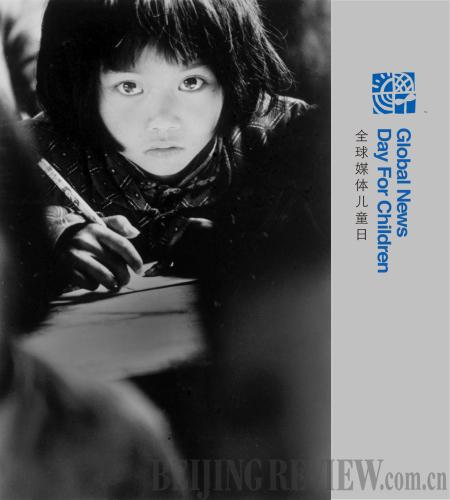|
 |
|
CALL FOR KINDNESS: A photo taken in 1991 shows Su Mingjuan, the poster girl for Project Hope, a nationwide education program to prevent dropouts in poverty-stricken areas XIE HAILONG |
When she was a third-grader, Su Mingjuan, a poor girl whose schooling was subsidized by a Chinese charity, sent 900 yuan ($132) of her educational aid to another girl in Ningxia Hui Autonomous Region who Su thought needed the money more than she did.
"At different levels of my education, I was helped by numerous kind anonymous people who sent money to support my schooling," said Su, an icon for Project Hope, a program under the China Youth Development Foundation (CYDF). The project was created in 1989 to work on dropout prevention in poverty-stricken areas and to mobilize social resources to help children resume school.
When Su was in first grade in 1991, a photographer documenting Project Hope took a picture of her in mountainous Jinzhai County, Anhui Province. From that moment, Su became the poster child of the project. The photo shows Su's large, innocent eyes over the slogan "I want to go to school." It touched all who saw it and inspired countless Chinese to donate money to the educational charity.
And now the poster child is an emblem of the project's success—she has graduated from college with a degree in finance and become a bank employee in Anhui. And she wanted to repay the kindness of others, so she donated her first month's salary to the project.
"The project provided me with not only money but also spiritual motivation to become independent," said Su when she attended Project Hope's 20th anniversary at the end of 2009 in Beijing.
Project Hope provides financial aid for students to attend school, builds new primary schools and equips schools with libraries, sports facilities, musical instruments, computer labs and audio-visual equipment.
Over the past two decades, Project Hope has proven to be a successful philanthropic undertaking by helping millions of poor rural girls just like Su. It has contributed to promoting youth development and advocating for social equality.
Organizers say its core value is to help others to support themselves by improving the abilities of recipients so that they may eventually overcome their difficulties and develop to their fullest potential.
A survey of Project Hope aid recipients in 2009 showed that it had a positive impact on them and had deeply affected their values while improving their livelihoods. They said they were willing to help others and volunteer in their communities.
"Many project beneficiaries have had their minds changed—they were instilled with confidence and learned about the importance of self reliance," said Tu Meng, Secretary General of CYDF. Tu said some recipients become donors and volunteers who spread the spirit of philanthropy.
Project Hope has recently expanded its aid radius from economically disadvantaged students in rural areas to also include secondary, vocational and college students, along with children of migrant workers.
In addition, the foundation has set up a "Stars of Hope Award Fund" to support top-ranked Project Hope students to further their studies and a "Hope Primary School Teacher-Training Fund" to aid teachers in sharpening their skills. The project also provides college students with part-time jobs and volunteer opportunities.
According to Tu, his organization has evolved to explore new assistance methods. Project organizers have adopted three approaches to help needy college students.
The first is traditional financial aid—about 20,000 yuan ($2,941) for each recipient in college.
The second approach is to provide part-time job opportunities to some 5,000 students to work at large companies, like the fast-food restaurant chain KFC. Each student is required to work 600 hours throughout college. The students not only earn income but also enrich their social experience, said Tu.
The third approach is to encourage students to set up on-campus public-service organizations that they manage. They can apply for funds from Project Hope if their organizations work well.
"In the environmental area, students can come up with ideas and solutions to dispose of used batteries. We'll then find experts to evaluate their solutions. The best ones will be awarded funds to carry out the project," said Tu. | 